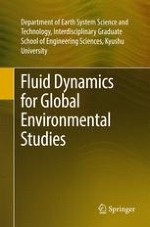
2017 | OriginalPaper | Chapter
1. Fundamental Equations in Fluid Dynamics
Author : Department of Earth System Science and Technology, Interdisciplinary Graduate School of Engineering Sciences, Kyushu University
Published in: Fluid Dynamics for Global Environmental Studies
Publisher: Springer Japan
Activate our intelligent search to find suitable subject content or patents.
Select sections of text to find matching patents with Artificial Intelligence. powered by
Select sections of text to find additional relevant content using AI-assisted search. powered by